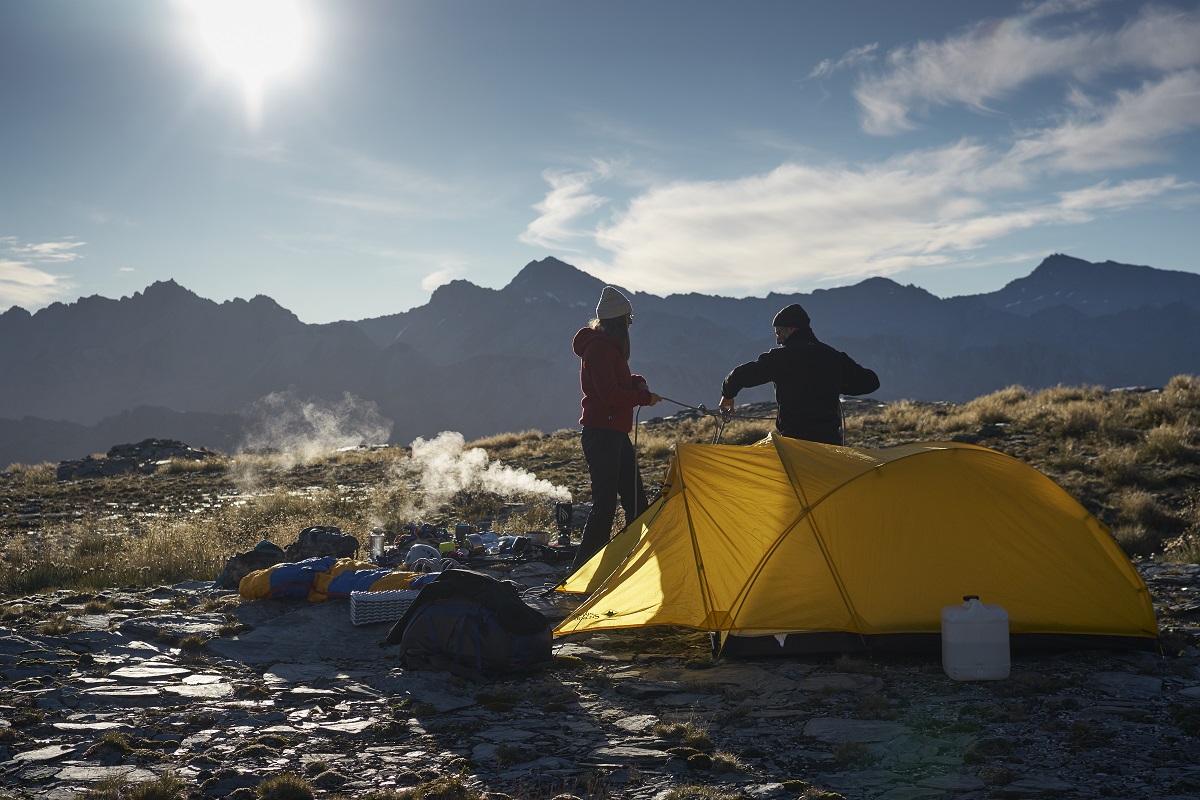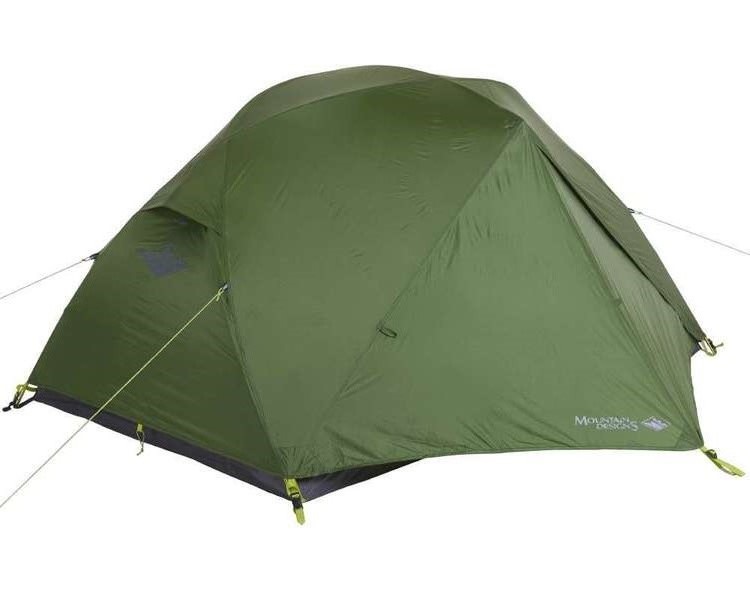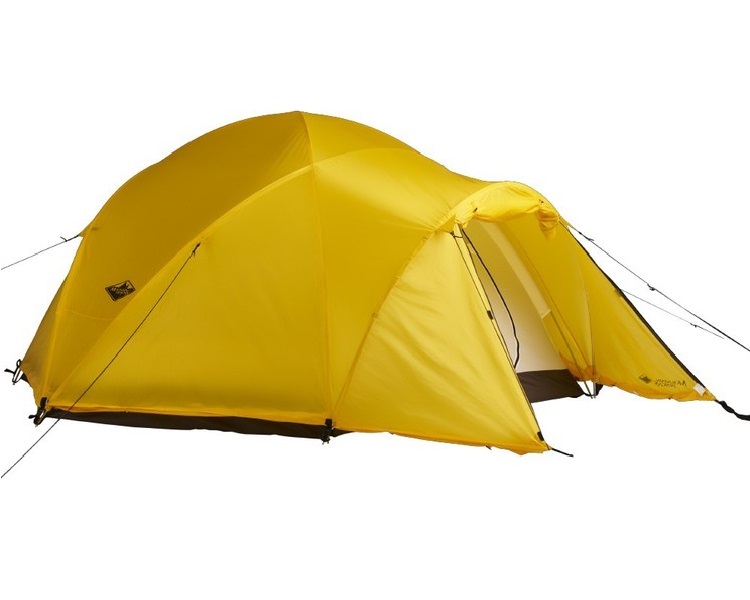| Your browser is not supported. | ||
|
Please browse our site using any of the following options:
| ||
How To - Pitch A Tent

When you're setting up camp for the night, all you want is to get your tent pitched quickly so you can sit back and relax. This becomes even more crucial if bad weather has rolled in and you have to bunker down. Follow these general tips, as well as the specific steps for your chosen Mountain Designs tent, to help make set-up a breeze.
General Tips & Notes
- Before heading out on your adventure, set up your tent at home to ensure you are familiar with it.
- Choose a level campsite with good drainage and clear away sharp or protruding objects (such as sticks, rocks and roots) that may damage the tent floor.
- Never let the poles just snap together, as it can damage the pole ends.
- Be careful with chemicals, such as stove fuels.
- Your tent is obviously designed for the outdoors but where possible avoid prolonged exposure to direct sunlight.
Pitching Your Tent
- Redline 1P Tent
- Redline 2P Tent
- Geo 2P & 3P Tent
- Expedition 2P Tent
- Alpine Bunker 3P Tent
- Burrow Bivy Tent
Redline 1P Tent - Pitching Instructions
- Choose an area free from sticks, rocks and roots. Avoid camping anywhere with dangerous branches overhead, or at the base of a cliff.
- Unpack and separate out the tent components.
- Insert pole tips into the grommet at the head end of the inner tent, then at the foot end of the inner tent.
- Attach the inner tent to the poles with the pole clips (A), then secure the corner anchors by hammering pegs into the ground with a hammer (or other hard object).
- Secure the fly to the poles with the internal Velcro tabs (B) and buckle at the base (C) on all corners. Pull firmly on the adjustable corner anchors - proper tension ensures maximum water shedding and wind resistance.
- Stake out the vestibule anchors and pull firmly on the webbing to ensure proper tension in the fly.
- Guy ropes can be secured for extra stability in high winds for optimal performance.
Redline 2P Tent - Pitching Instructions
- Choose an area free from sticks, rocks and roots. Avoid camping anywhere with dangerous branches overhead, or at the base of a cliff.
- Unpack and separate out the tent components.
- Insert pole tips into the grommet at the head end of the inner tent, then at the foot end of the inner tent.
- Attach the inner tent to the poles with the pole clips (A), then secure the corner anchors by hammering pegs into the ground with a hammer (or other hard object). Finally, secure the ends of the top cross-bar pole into the plastic holes on the inner tent.
- Secure the fly to the poles with the internal Velcro tabs (B) and buckle at the base (C) on all corners. Pull firmly on the adjustable corner anchors - proper tension ensures maximum water shedding and wind resistance.
- Stake out the vestibule anchors and pull firmly on the webbing to ensure proper tension in the fly.
- Guy ropes can be secured for extra stability in high winds for optimal performance.
Geo 2P & 3P Tent - Pitching Instructions
- Choose an area free from sticks, rocks and roots. Avoid camping anywhere with dangerous branches overhead, or at the base of a cliff.
- Unpack and separate out the tent components.
- Assemble all poles, then slide the two longest poles into the pole sleeves on the inner tent.
- Insert pole tips into the grommets at the head end of the inner tent, then at the foot end of the inner tent (A), making sure the pole coming out of the pole sleeve with the grey binding is inserted into the grommet with the grey webbing.
- Slide the top cross-bar pole through the fabric rings (B) on pole sleeves, then secure the pole ends into the plastic end caps (C) on the inner tent.
- Attach the inner tent to the poles with the pole clips (D), then secure the corner anchors by hammering pegs into the ground with a hammer (or other hard object).
- Secure the fly to the poles with the internal Velcro tabs (E) and buckle at the base (F) on all corners. Pull firmly on the adjustable corner anchors - proper tension ensures maximum water shedding and wind resistance.
- Stake out the vestibule anchors and pull firmly on the webbing to ensure proper tension in the fly.
- Guy ropes can be secured for extra stability in high winds for optimal performance.
Expedition 2P Tent - Pitching Instructions
- Choose an area free from sticks, rocks and roots. Avoid camping anywhere with dangerous branches overhead, or at the base of a cliff.
- Unpack and separate out the tent components.
- Assemble all poles, then insert pole tips of longest poles into the grommets at the non-door end of the inner tent. Make sure the pole end with the elbow join is at the non-door end.
- Slide the front door pole into the black mesh sleeve (B).
- Stand and insert pole tips of longest poles into the grommets at the door end, followed by the pole tips of the front door pole into the side grommets. Attach the inner tent to the poles with the pole clips (A).
- Secure the corner anchors by hammering pegs into the ground with a hammer (or other hard object).
- Secure the fly to the poles with the internal Velcro tabs (B) and buckle at the base (C) on all corners. Pull firmly on the adjustable corner anchors - proper tension ensures maximum water shedding and wind resistance.
- Slide the silver pole through the vestibule sleeve marked by grey binding (D), ensuring the pole tips are inserted into the silver grommets (E).
- Stake out the vestibule anchors and pull firmly on the webbing to ensure proper tension in the fly.
- Guy ropes can be secured for extra stability in high winds for optimal performance.
Alpine Bunker 3P Tent - Pitching Instructions
- Choose an area free from sticks, rocks and roots. Avoid camping anywhere with dangerous branches overhead, or at the base of a cliff.
- Unpack and separate out the tent components.
- Assemble all poles, then slide the four longest poles into the pole sleeves of the inner tent.
- Insert pole tips into the grommets at the door ends of the inner tent, then at the sides of the inner tent.
- Secure the corner anchors by hammering pegs into the ground with a hammer (or other hard object).
- Secure the fly to the poles with the internal Velcro tabs (A) and buckle at the base (B) on all corners. Pull firmly on the adjustable corner anchors - proper tension ensures maximum water shedding and wind resistance.
- Slide the silver pole through the vestibule sleeve marked by grey binding (C), ensuring the pole tips are inserted into the silver grommets (D).
- Stake out the vestibule anchors and pull firmly on the webbing to ensure proper tension in the fly.
- Guy ropes can be secured for extra stability in high winds for optimal performance.
- Depending on conditions, roll up the storm flaps for ventilation or pack snow on top of them to further secure your base.
Burrow Bivy Tent - Pitching Instructions
- Choose an area free from sticks, rocks and roots. Avoid camping anywhere with dangerous branches overhead, or at the base of a cliff.
- Unpack and separate out the tent components.
- Lay the tent inner flat out on the ground, unzip the door and peg down one corner (into the wind).
- Assemble the two hoop poles. (Do not shake into place).
- Push the pole through the sleeve into the opposite eyelet. Repeat for the other pole.
- Flex pole and insert tip into eyelet. Repeat for the other poles.
- Peg out the back and then the front of inner.
- Cover with the fly.
- Clip tension buckles together, adjusting the fit and tension at each pole point, and peg out the vestibules and remaining points.
- Guy ropes can be tethered for extra stability in high winds.

